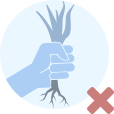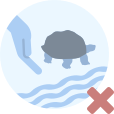
Go to our visitor centres, information points and ecomuseums to get the most out of your visit.
The Rivers of Guadiaro and Hozgarganta Special Area of Conservation is located between Malaga and Cadiz. Its 410 hectares are divided up between the towns of Jimena, Castellar and San Roque in Cadiz and those of Gaucín and Casares in Malaga.
The Rivers Guadiaro and Hozgarganta belong to the Guadiaro sub-basin, which lies within the Andalusian Mediterranean basins. The Guadiaro constitutes one of the last great rivers in Andalusia that is not regulated by large dams, together with the Hozgarganta and Genal tributaries.
The River Guadiaro starts in Serranía de Ronda and flows through the Malaga and Cadiz provinces. Its upper section passes through the towns of Malaga in the Serranía de Ronda area and constitutes the border of the Sierra de Grazalema and Los Alcornocales natural parks. It then crosses the Cañón de las Buitreras Natural Monument (Outstanding River Area status), and enters Cadiz province via San Pablo de Buceite. After a journey of 82 kilometres, it arrives at the Mediterranean in Sotogrande, San Roque, forming the estuary of the River Guadiaro. Its main tributaries are the Hozgarganta, on the right, and El Genal on the left (both have Outstanding River Area status).
The source of the River Hozgarganta is in the Sierra del Aljibe; the confluence of La Sauceda and Pasada Blanca. After crossing Cortes de la Frontera in Malaga, it enters Cadiz as far as its mouth in the River Guadiaro. As it travels 40 kilometres through the Los Alcornocales Natural Park along, there is a transition from canuto-type formations, typical of the Sierra del Aljibe, to stretches of fertile plains that meander through alluvial plains, flat agricultural land.
The wildlife in the area is typical of the riverbank, with otters, Mediterranean turtles and Pseudochondrostoma willkommii fish as the main protagonists. All three are species of community interest. Invertebrates, such as crayfish, dragonflies and the Spanish funnel-web spider, endemic to the south of the Iberian Peninsula are also of note, as well as other fish species such as the sea lamprey, Cobitis paludica, Andalusian barbel, Squalius malacitanus, and eel. There are also amphibians such as the Spanish painted frog, and salamander subspecies that extend to the south of the Guadalquivir, and birds such as the white-throated dipper, kingfisher, and various species of birds of prey.




Go to our visitor centres, information points and ecomuseums to get the most out of your visit.

Follow the recommendations and comply with the regulations at all times

Respect the facilities put at your disposal. We all pay for its maintenance.

Help prevent fires. Do not throw cigarettes or any other object that produces combustion.

Trash doesn't come back alone. Take it with you to the nearest container. Reduce, reuse, recycle.

Noise is another form of pollution. In silence you will enjoy your experience more.

Live respectfully with the locals and other users. Respect private property.

Facilitate use for people with special needs.

By consuming local products and counting on local companies, you will contribute to rural development.

Practice responsible tourism and committed to the environment. Be a true ecotourist!

Never leave your pet in the wild. It would endanger the flora and fauna of the place.

Get around in a sustainable way: public transport, bicycle, on foot, electric or shared vehicle ... Park in the designated places

Do not leave a trace of your passage through nature. The best memory you can take with you is your own photograph.

Your safety is our concern, but it is your responsibility.

The conservation of natural spaces is also in your hands. Thank you for your collaboration!